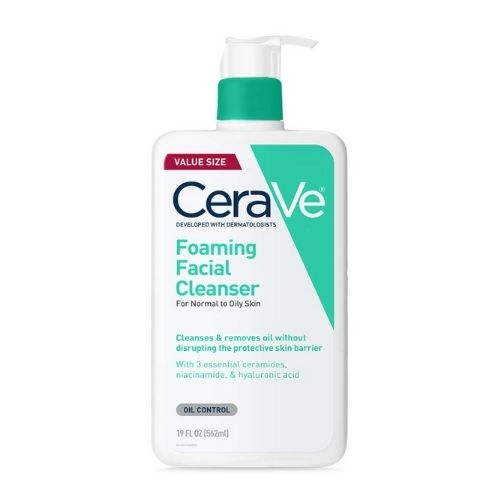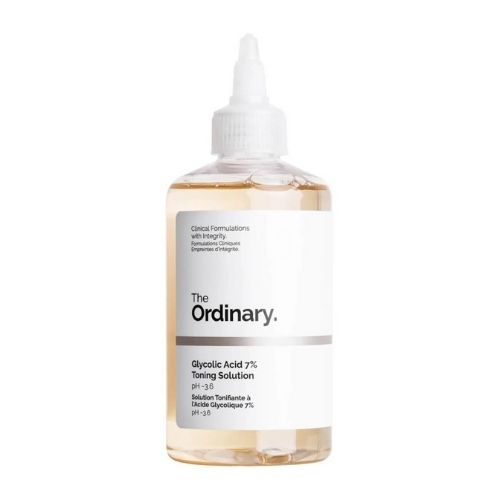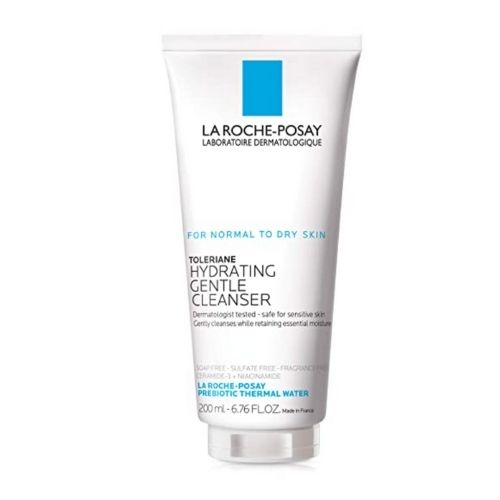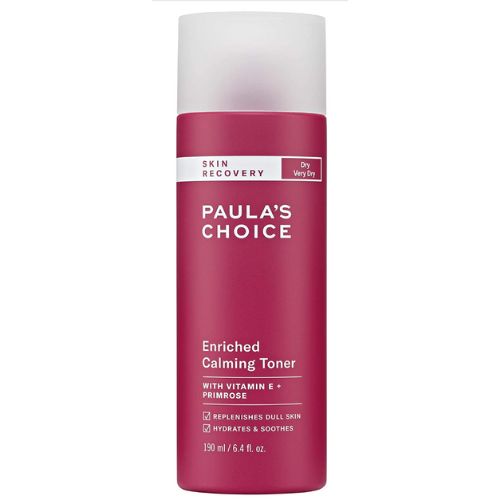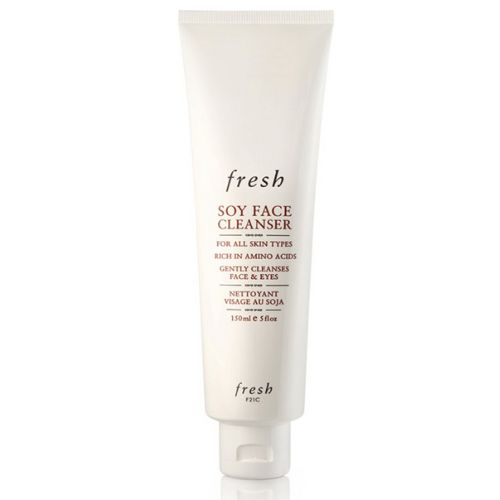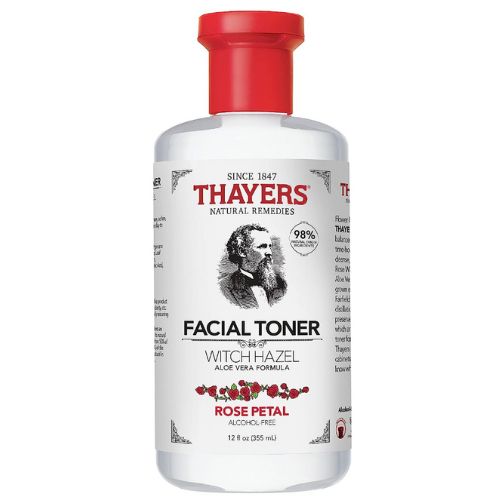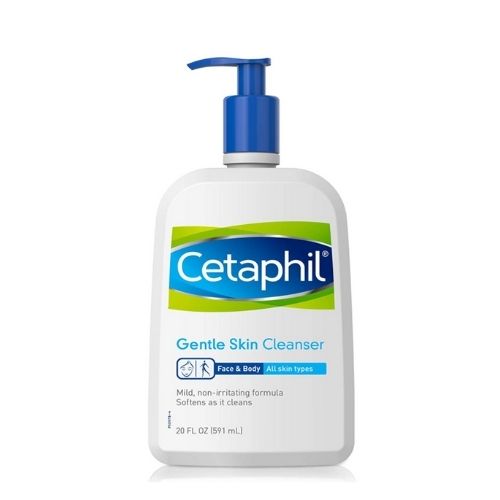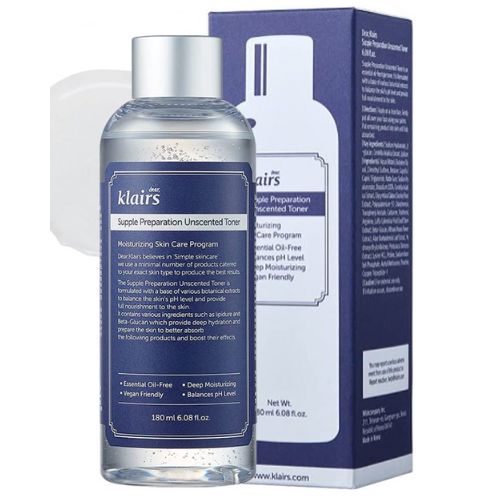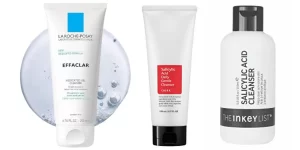
Let’s discuss two of the most essential skincare products: cleanser vs toner.
You may have heard of them before (that’s why you’re here), but do you truly understand their purpose and how to properly use them?
Don’t worry, I’ve got you covered.
I’ll explain everything you need to know about cleansers and toners, including the main differences between them, the different types and benefits of each, and how to choose the best one for your skin type and needs.
Trust me, once you start using cleansers and toners regularly, you’ll see a significant difference in the appearance and health of your skin.
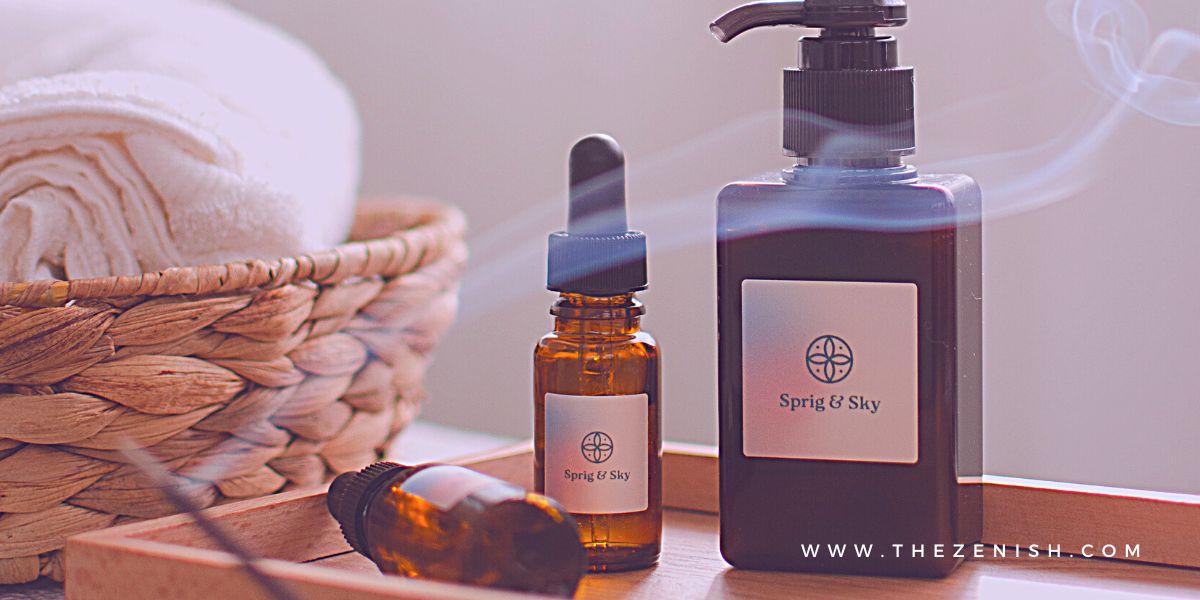
So, let’s get started!
| this post may contain affiliate links, which means if you purchase from one of these links, I may receive a small commission at no additional cost to you. |
What are cleansers?
Cleansers are an essential first step in any skincare routine.
They effectively remove dirt, oil, makeup, bacteria, and other impurities from your skin, helping to keep it clean and prevent breakouts.
Additionally, cleansers prepare your skin for the rest of your skincare products, allowing them to work more effectively.
When your skin is free from any gunk, your products will absorb better and work more effectively.
The different types of cleansers
There are many different types of cleansers out there, and they all have their own pros and cons.
Here are some of the most common ones:
Oil-based cleansers
Oil-based cleansers are great for breaking down makeup and oil from your skin.
Typically, these cleansers come in the form of balms or oils that you massage onto your dry skin and then rinse off with water or a cloth.
They are suitable for all skin types, especially for those with dry or sensitive skin, and can help to moisturize and nourish your skin.
Creamy cleansers
Creamy cleansers are ideal for dry, dehydrated, and sensitive skin types.
They typically contain hydrating and moisturizing ingredients that help to strengthen your skin barrier and add moisture back into parched skin.
You can choose between creamy or milky textures of these products, which you apply to your wet skin and then rinse off with water or a cloth.
Gel cleansers
Gel cleansers are great for those with oily or acne-prone skin types.
They have a gel-like texture that foams up when mixed with water and can effectively remove excess oil and dirt from your pores while controlling sebum production.
They can also have antibacterial or anti-inflammatory properties that can help to fight acne.
Waterless cleansers
Waterless cleansers are a type of cleanser that can be used without the need for water.
They’re convenient to use and gentle on your skin.
An example of this is micellar water, a liquid that contains tiny micelles that act like magnets to attract dirt, oil, and makeup from your skin.
You just need to soak a cotton pad with micellar water and wipe it across your face.
Benefits of using cleansers
Some of the benefits of using a cleanser are:
- Cleanses your skin: Keeping your skin clean is essential for a healthy skin barrier and function. When your skin isn’t cleansed often, it can lead to a buildup of dead skin, bacteria, dirt, and oil which can cause a ton of different issues like acne and other skin conditions.
- Preps your skin: Cleansers help to prep your skin for the rest of your skincare routine.
- Enhances product absorption: Keeping your skin free from impurities such as oil, sweat, makeup, etc allows your skincare products to absorb better, resulting in more effective results.
- Keeps your skin clear: Cleansing your skin is one of the most important steps in any skincare routine. Without properly cleansing your skin, dirt, oil, bacteria, and dead skin cells can all build up on your skin and lead to acne.
- Improves texture: Cleansers can help to sweep away dead skin cells so they don’t end up just sitting on the surface of your skin. This can help improve your skin texture.
How to use a cleanser
- Ideally, you’ll use it twice a day (in the morning and at night) however, using it once a day (preferably in the evening) is also fine.
- Choose a cleanser that works for your skin (it doesn’t cause breakouts, irritation, dryness, etc)
- Wet your face with lukewarm water.
- Apply a small amount of cleanser to your fingertips or a cleansing tool.
- Massage the cleanser onto your face in circular motions for about 60 seconds.
- Rinse off the cleanser with lukewarm water or a damp cloth.
- Pat your face dry with a soft towel.
- Follow up with a toner and the rest of your skincare products.
What are toners?
Toners are the second step in any skincare routine.
They help to balance the pH of your skin and add hydration back to your skin after cleansing.
They also have other benefits depending on their ingredients and formulation.
For example, some toners can help to soothe, hydrate, exfoliate, treat acne, and more.
The different types of toners
There are different types of toners out there, and they all have their own pros and cons.
Here are some of the most common ones:
Hydrating toners
Hydrating toners contain ingredients like hyaluronic acid, glycerin, or aloe vera that help replenish moisture that may have been stripped away during cleansing.
They also plump up and smooth out your skin.
Exfoliating toners
Exfoliating toners contain ingredients such as alpha hydroxy acids (AHAs), beta hydroxy acids (BHAs), or enzymes that help to remove dead skin cells and unclog pores.
These toners also brighten and even out your skin tone.
Soothing toners
Soothing toners contain ingredients such as chamomile, green tea, or cucumber that help calm and reduce inflammation and redness on the skin.
They also aid in healing and repairing the skin.
Acne-fighting toners
Acne-fighting toners contain ingredients like salicylic acid, tea tree oil, or witch hazel that help to kill bacteria and prevent breakouts.
They also control oil and shrink pores.
Benefits of using a toner
Some of the benefits of using a toner are:
- Balances your skin’s pH: Toners help to balance the pH of your skin after cleansing. The pH of your skin is the measure of how acidic or alkaline it is. The ideal pH for your skin is around 5.5, which is slightly acidic. This helps to keep your skin barrier healthy and protect it from bacteria and environmental damage. However, cleansing can disrupt the pH of your skin and make it more alkaline, which can lead to dryness, irritation, and breakouts. Toners can help to restore the pH of your skin and make it more balanced.
- Adds hydration: Toners help to add hydration back to your skin after cleansing. Cleansing can strip away some of the natural oils and moisture from your skin, which can make it feel tight and dry. Toners can help to replenish the moisture that was lost and keep your skin hydrated and plump.
- Enhances product absorption: Toners help to enhance product absorption by removing any residue or traces of cleanser from your skin. This way, your skin is ready to receive the next skincare products that you apply. Toners can also help to create a thin layer of moisture on your skin that can act as a carrier for other products.
- Treats specific skin concerns: Toners can help to treat specific skin concerns depending on their ingredients and formulation. For example, some toners can help to soothe, hydrate, exfoliate, treat acne, and more.
How to use a toner
- Use a toner after cleansing your skin.
- Choose a toner that is appropriate for your skin type and needs.
- Soak a cotton pad with toner or pour some toner into your palms.
- Gently swipe or pat the toner onto your face and neck.
- Wait for the toner to dry or absorb into your skin.
- Follow up with a serum and a moisturizer.
Cleanser vs Toner: Differences and Similarities
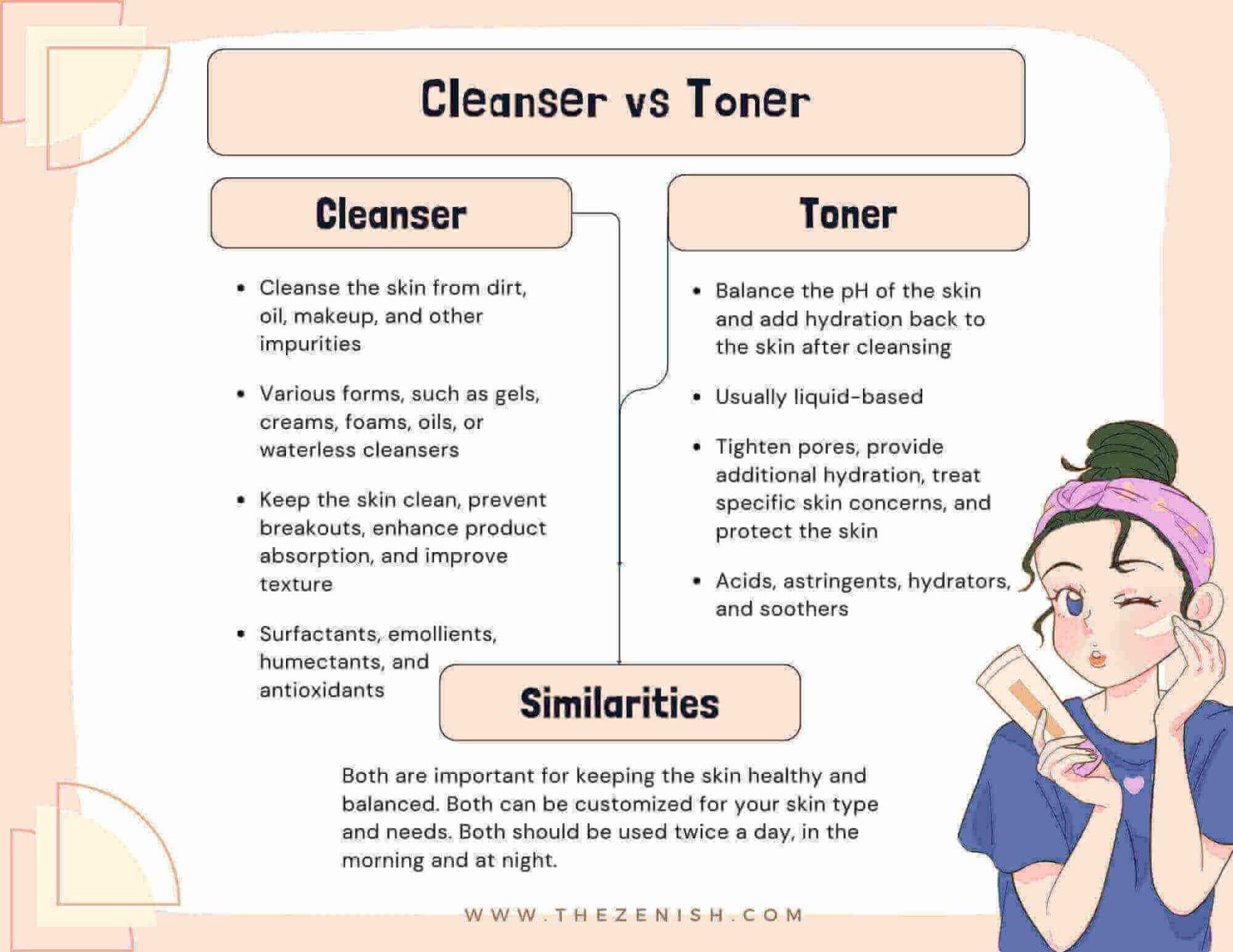
You might be wondering what are the main differences and similarities between cleansers and toners.
Here are some of the key points to remember:
Purpose
Cleansers are designed to remove dirt, oil, makeup, and other impurities from the skin, while toners balance the skin’s pH and provide hydration after cleansing.
Cleansing is the first step in any skincare routine while toning is the second.
Form
Cleansers are available in various forms, including gels, creams, foams, oils, or waterless cleansers, while toners are typically liquid-based.
Cleansers require rinsing with water or a cloth, whereas toners can be applied with a cotton pad or directly with your palms.
Benefits
Cleansers help keep your skin clean, prevent breakouts, enhance product absorption, and improve texture.
Toners, on the other hand, tighten pores, provide additional hydration, treat specific skin concerns, and protect your skin.
Ingredients
Cleansers are formulated with ingredients like surfactants, emollients, humectants, and antioxidants that aid in removing impurities and moisturizing the skin.
On the other hand, toners contain ingredients such as acids, astringents, hydrators, and soothers that help exfoliate, control oil, hydrate, and soothe the skin.
Similarities
Using both cleansers and toners is essential for maintaining healthy and balanced skin. They can be customized to meet your specific skin type and needs.
For best results, use both cleansers and toners twice a day – once in the morning and once at night.
Cleanser vs Toner: For Each Skin Type
After learning about the differences and similarities between cleansers and toners, you may be wondering how to choose the best ones for your skin type.
Here are some examples of suitable cleansers and toners for different skin types and needs:
For oily skin
If you have oily skin, you may experience excess sebum and oil which can lead to clogged pores and breakouts.
To combat this, it’s important to use a cleanser that removes excess oil and dirt without stripping your skin of its natural moisture.
Additionally, a toner can help control oil production, tighten pores, and prevent acne.
For dry skin
Dry skin often lacks moisture, which can cause it to feel tight, flaky, and dull.
To combat this, it’s important to use a gentle cleanser that won’t strip away any remaining moisture from your skin.
Additionally, using a toner that adds hydration back to your skin and locks in moisture can be very beneficial.
Here are some examples of cleansers and toners that are great for dry skin:
For combination skin
Combination skin is characterized by both oily and dry areas, typically with an oily T-zone (forehead, nose, and chin) and dry cheeks.
To address this, it’s important to use a cleanser that can balance your skin’s oil production and hydration levels.
You also need a toner that can address both your oily and dry areas without causing irritation or sensitivity.
Some examples of cleansers and toners for combination skin are:
For sensitive skin
If you have sensitive skin, you may experience redness, inflammation, and irritation due to harsh products, environmental stressors, or allergies.
To avoid adverse reactions, it’s important to use a gentle cleanser that can effectively cleanse your skin without causing any harm.
You also need a toner that can calm and comfort your skin while protecting it from further damage.
Cleanser vs toner: how to choose the best one for your skin
Now that you know what cleansers and toners do and how they work, you may be wondering how to choose the best one for you.
There are several factors to consider when selecting a cleanser or toner, including:
Your skin type
Choosing the right cleanser or toner depends on your skin type, which is one of the most important factors to consider.
Each skin type has unique needs and preferences when it comes to skincare products.
For instance, if you have oily or acne-prone skin, you may want to opt for a gel cleanser and an acne-fighting toner that can help remove excess oil and prevent breakouts.
If you have dry or sensitive skin, you might want to choose a creamy cleanser and a hydrating toner that can help to moisturize and soothe your skin.
Your skin concerns
Your skin concerns are another important factor when choosing a cleanser or a toner.
Each skin concern requires a unique solution and treatment when it comes to skincare products. For dull or uneven skin tone, consider using an exfoliating cleanser and toner to brighten and even out your skin.
If you have redness or inflammation, you might want to choose a soothing cleanser and a soothing toner that can help to calm and reduce inflammation on your skin.
The ingredients
The ingredients are another important factor when choosing a cleanser or a toner.
Each ingredient has its own unique effects and benefits on your skin.
It’s important to always check the ingredient list of any skincare product before purchasing or using it.
Look for ingredients that are suitable for your skin type and needs, and avoid ingredients that are harmful or irritating to your skin.
Ingredients to look for in a cleanser
Some of the ingredients that you should look for in cleansers are:
- Surfactants: These are the ingredients that make cleansers foam up and remove impurities from your skin. Look for gentle surfactants that won’t strip away too much oil or moisture from your skin, such as cocamidopropyl betaine, sodium cocoyl isethionate, sodium lauroyl sarcosinate, etc.
- Emollients: These are the ingredients that make cleansers feel smooth and creamy on your skin. They also help to moisturize and soften your skin. Look for emollients that are natural or plant-based, such as shea butter, jojoba oil, almond oil, etc.
- Humectants: These are the ingredients that help to attract and retain water in your skin. They also help to hydrate and plump up your skin. Look for humectants that are natural or synthetic, such as glycerin, hyaluronic acid, aloe vera, etc.
- Antioxidants: These are the ingredients that help to protect your skin from free radical damage and environmental stressors. They also help to repair and rejuvenate your skin. Look for antioxidants that are natural or synthetic, such as vitamin C, vitamin E, green tea, niacinamide, etc.
Ingredients to look for in a toner
Some of the ingredients that you should look for in toners are:
- Acids: These are the ingredients that help to exfoliate and remove dead skin cells from your skin. They also help to brighten and even out your skin tone. Look for acids that are natural or synthetic, such as alpha hydroxy acids (AHAs), beta hydroxy acids (BHAs), or enzymes.
- Astringents: These are the ingredients that help to tighten and contract your pores. They also help to control oil and sebum production. Look for astringents that are natural or synthetic, such as witch hazel, alcohol, tea tree oil, etc.
- Hydrators: These are the ingredients that help to replenish the moisture that may have been lost by cleansing or toning. They also help to hydrate and plump up your skin. Look for hydrators that are natural or synthetic, such as hyaluronic acid, glycerin, aloe vera, etc.
- Soothers: These are the ingredients that help to calm and reduce inflammation and redness on your skin. They also help to heal and repair your skin. Look for soothers that are natural or synthetic, such as chamomile, green tea, cucumber, etc.
Ingredients avoid in both cleansers and toners
Some of the ingredients that you should avoid in cleansers and toners are:
- Sulfates: These are harsh surfactants that can strip away too much oil and moisture from your skin. They can also cause irritation and dryness. Avoid sulfates such as sodium lauryl sulfate (SLS), sodium laureth sulfate (SLES), ammonium lauryl sulfate (ALS), etc.
- Parabens: These are preservatives that can disrupt your hormonal balance and cause allergic reactions. Avoid parabens such as methylparaben, propylparaben, butylparaben, etc.
- Fragrances: These are artificial scents that can cause irritation and sensitivity on your skin. Avoid fragrances such as perfume, parfum, linalool, limonene, etc.
- Alcohol: This is a drying agent that can dehydrate and irritate your skin. Avoid alcohol such as ethanol, isopropyl alcohol, denatured alcohol, etc.
FAQs
Do I need to use both a cleanser and a toner?
No, you don’t need to use both.
Just using a cleanser is perfectly fine, and skipping the toner is also an option.
Using both products together, however, can help keep your skin clean, balanced, and hydrated.
Cleansers remove dirt, oil, makeup, and other impurities from your skin, while toners restore your skin’s pH balance and add hydration after cleansing.
Using both a cleanser and a toner can help to improve your skin’s appearance and health.
In what order should I use cleanser and toner in my skincare routine?
You should always use a cleanser first, followed by a toner.
A cleanser should be the first step in your skincare routine, as it prepares your skin for the rest of your skincare products.
Toner should be the second step in your skincare routine, as it enhances product absorption and treats specific skin concerns.
How do I know if a cleanser or a toner is too harsh or drying for my skin?
You can tell if a cleanser or a toner is too harsh or drying for your skin by how your skin feels after using it.
If your skin feels tight, dry, irritated, or flaky, then the cleanser or toner may be too harsh or drying for your skin.
You should look for a gentler or more hydrating cleanser or toner that suits your skin type and needs.
Can I use the same cleanser or toner for my face and body?
You can but, you shouldn’t and that’s because the skin on your face and body is different and has different needs.
The skin on your face is more delicate and sensitive than that on your body.
It also tends to be more oily or acne-prone compared to the skin on your body.
Therefore, you should use a separate cleanser or toner for your face and body that’s designed for each area.
How long does it take to see results from using cleansers and toners?
The results of using cleansers and toners depend on your skin type, needs, and goals.
While some people may see immediate results, others may take longer to notice any changes.
Typically, it can take anywhere from a few days to a few weeks to see the results of using cleansers and toners.
However, you should be consistent and patient with your skincare routine to get the best results.

